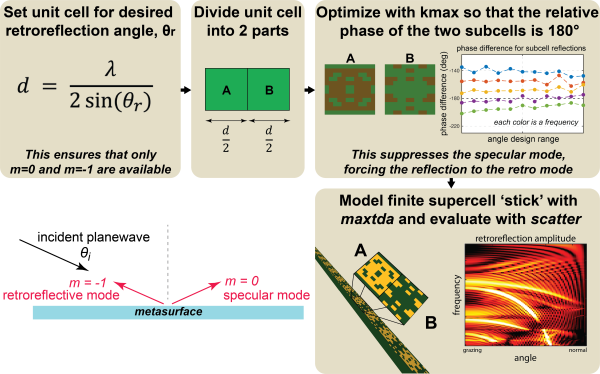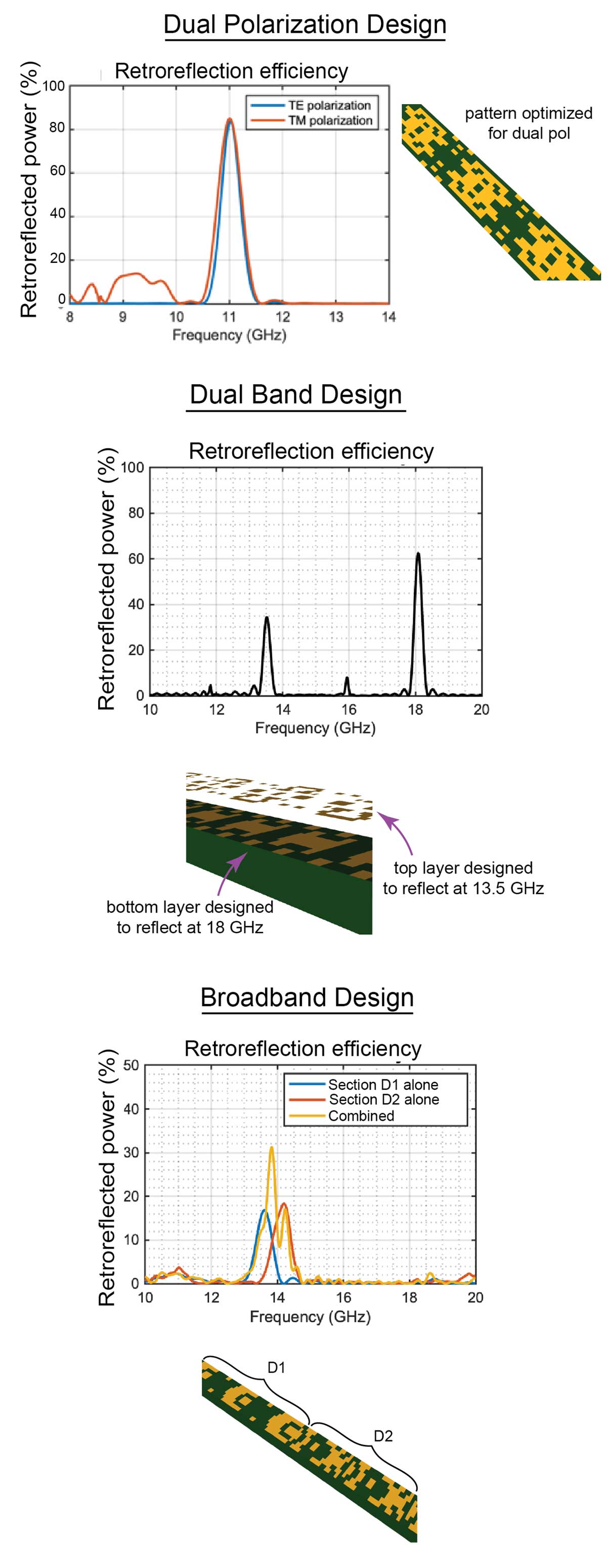These versatile retroreflective metastructures improve the control of higher-order spatial harmonics reflected from binary metasurfaces, which is particularly challenging for steep angles of incidence. By combining multiple resonant metasurfaces and differing lattice spacings, these metastructures increase both their retroreflective bandwidth and angular range. They maintain reasonably high efficiency and dual-polarization, and they greatly reduce the angular precision necessary to produce a retroreflective response.
Developed by Georgia Tech, this technology offers several configuration possibilities to allow for customized metastructures for specific operations. These capabilities are useful for many civilian and military applications, including radio frequency identification (RFID), optical tagging, and smart surfaces for 5G.
- Improved steep angle performance: Increases the angular range of reflectivity to greatly reduce the precision needed to produce a retroreflective response
- Increased bandwidth: Combines multiple periodic metasurfaces into a hybrid metastructure for greater bandwidth
- Versatile design: Can be designed for either single- or dual-polarized retroreflection, with metasurfaces of different periodicities combined for varying angles
- High efficiency: Uses a multilayered design to increase efficiency, allowing the metastructure to behave as a retroreflector at two independent frequencies and the entire surface area to be used for both
- Compatible: Can be applied to outer mold line of a variety of structures (e.g., aerodynamic, spacecraft, etc.), allowing retrofit on existing platforms
- Communications with satellites and unmanned vehicles
- Remote sensing
- Target labeling
- Navigation safety
- Visibility enhancement
Even highly absorbent surfaces can become very reflective when the angle of incidence is steep. For example, an asphalt road will reflect sunlight late in the day when the sun is low. Controlling higher order spatial harmonics reflected from a surface is important for many civilian and military applications, but it is particularly challenging technically for steep angles of incidence. For over a decade, highly efficient wideband retroreflecting metasurfaces have been studied without producing satisfactory results.
Recently published results for a class of metamaterials called binary Huygens metasurfaces, however, show promise to address this long-standing challenge in the control of spatial harmonics. Their results, however, are for only a single polarization and narrow angular and frequency range. Georgia Tech’s new techniques extend the concept of array-based binary metasurfaces to dual polarization and increase both frequency and angular bandwidth.
These retroreflective metastructures are made up of several metasurface arrays for enhanced retroreflective electromagnetic responses. There are several possible designs using stacked or side-by-side configurations to achieve features such as dual polarization, dual band, or broadband. The designs also offer varying efficiency levels. For example, a stacked metastructure offers higher efficiency, while a side-by-side configuration is less efficient but offers simpler construction and more flexibility.

Design procedure for binary metasurfaces

Results from dual polarization, dual band, and broadband design illustrating the trade-off between efficiency levels, bandwidth of retroreflection, ease of construction and flexibility
